
Filter News
Area of Research
News Topics
- (-) Hydropower (6)
- (-) Molten Salt (2)
- (-) Quantum Science (48)
- 3-D Printing/Advanced Manufacturing (56)
- Advanced Reactors (12)
- Artificial Intelligence (77)
- Big Data (45)
- Bioenergy (68)
- Biology (80)
- Biomedical (42)
- Biotechnology (25)
- Buildings (30)
- Chemical Sciences (35)
- Clean Water (16)
- Composites (11)
- Computer Science (111)
- Coronavirus (19)
- Critical Materials (5)
- Cybersecurity (14)
- Education (2)
- Emergency (3)
- Energy Storage (32)
- Environment (116)
- Exascale Computing (51)
- Fossil Energy (6)
- Frontier (44)
- Fusion (38)
- Grid (32)
- High-Performance Computing (81)
- Isotopes (33)
- ITER (4)
- Machine Learning (37)
- Materials (51)
- Materials Science (55)
- Mathematics (8)
- Mercury (7)
- Microelectronics (3)
- Microscopy (23)
- Nanotechnology (17)
- National Security (60)
- Neutron Science (82)
- Nuclear Energy (66)
- Partnerships (36)
- Physics (34)
- Polymers (9)
- Quantum Computing (35)
- Security (16)
- Simulation (42)
- Software (1)
- Space Exploration (13)
- Statistics (2)
- Summit (40)
- Transportation (30)
Media Contacts
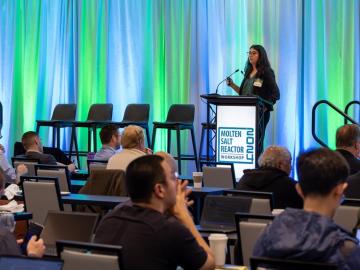
ORNL’s annual workshop has become the premier forum for molten salt reactor, or MSR, collaboration and innovation, convening industry, academia and government experts to further advance MSR research and development. This year’s event attracted a record-breaking 365 participants from across the country, highlighting the momentum to bring MSRs online.

Since their establishment in 2020, the five DOE National Quantum Information Science Research Centers have been expanding the frontier of what’s possible in quantum computing, communication, sensing and materials in ways that will advance basic science for energy, security, communication and logistics.
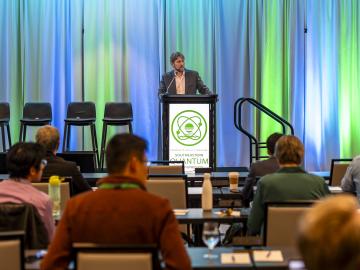
ORNL welcomed attendees to the inaugural Southeastern Quantum Conference, held Oct. 28 – 30 in downtown Knoxville, to discuss innovative ways to use quantum science and technologies to enable scientific discovery.
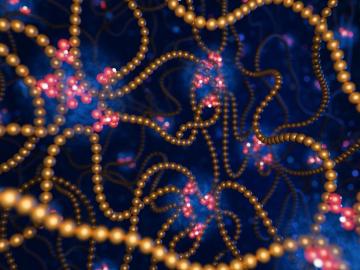
Electrolytes that convert chemical to electrical energy underlie the search for new power sources with zero emissions. Among these new power sources are fuel cells that produce electricity.

The Department of Energy’s Quantum Computing User Program, or QCUP, is releasing a Request for Information to gather input from all relevant parties on the current and upcoming availability of quantum computing resources, conventions for measuring, tracking, and forecasting quantum computing performance, and methods for engaging with the diversity of stakeholders in the quantum computing community. Responses received to the RFI will inform QCUP on both immediate and near-term availability of hardware, software tools and user engagement opportunities in the field of quantum computing.
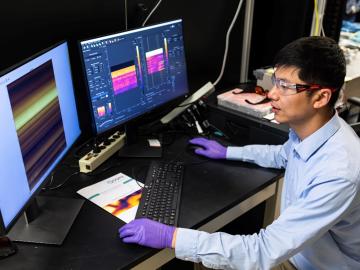
Huan Zhao, a Eugene P. Wiger Fellow at ORNL, focuses on advancing quantum materials and information technologies, inspired by his grandfather's passion for education. His research in energy-efficient memory devices and sensitive quantum light sources reflects his commitment to scientific progress and education equity.
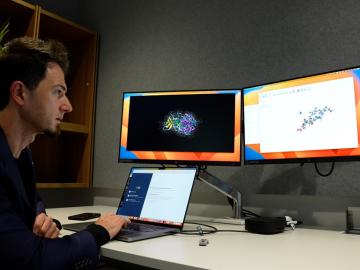
Researchers led by the University of Melbourne, Australia, have been nominated for the Association for Computing Machinery’s 2024 Gordon Bell Prize in supercomputing for conducting a quantum molecular dynamics simulation 1,000 times greater in size and speed than any previous simulation of its kind.
Researchers from ORNL have taken a major step forward in using quantum mechanics to enhance sensing devices, a new advancement that could be used in a wide range of areas, including materials characterization, improved imaging and biological and medical applications.
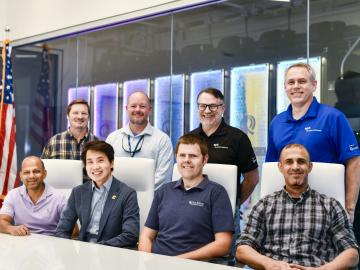
For the first time, ORNL will run equipment developed at its research facilities on a commercially available quantum network at EPB Quantum Network powered by Qubitekk to help validate the technology's commercial viability.
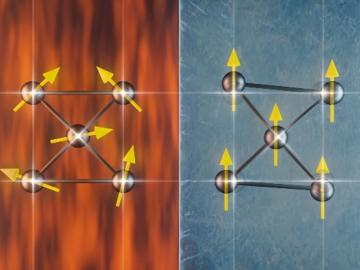
At ORNL, a group of scientists used neutron scattering techniques to investigate a relatively new functional material called a Weyl semimetal. These Weyl fermions move very quickly in a material and can carry electrical charge at room temperature. Scientists think that Weyl semimetals, if used in future electronics, could allow electricity to flow more efficiently and enable more energy-efficient computers and other electronic devices.


